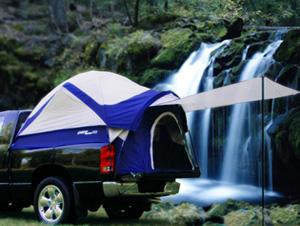Greenbacks for greener cars
They already got 25 billion dollars to help them build more fuel-efficient cars, now America’s Big Three automakers want more, another 25 billion to stay afloat as sales disintegrate. Professor Daniel Sperling of UC-Davis says as long as taxpayers are shelling out so much green, maybe there should be green benefits to the bailout. Professor Sperling is founding director of the Institute of Transportation Studies.
"I think this is an opportunity. This is a lot of money, but we can use it to pursue the public interest to do what’s good for society. And I think that means focusing on innovation, especially with respect to low carbon vehicles, fuel-efficient vehicles, the plug in vehicles, the battery vehicles, the fuel cell vehicles."
As for insuring that the money is given with green strings attached: "I think first of all, we just need to elicit guarantees from those companies that they really are going to roll out large volumes of affordable, fuel efficient, low carbon vehicles. You know, these Detroit companies, GM in particular, really have very strong technological capabilities, but they’re known also for not taking what’s in the lab and bringing it into the market place. They haven’t shown the vision, the commitment, the leadership. And let’s finance this whole thing by creating a price floor for gasoline. Let’s set it at like three-and-a-half dollars a gallon, and we can have a variable tax – if it goes below that, we have a tax to push it up to $3.50. And we can use those funds to support, perhaps some of even the smaller start-up companies that are innovative, and some of the funds can be used for, you know, those low income people where it really is a hardship."
But it’s not entirely Detroit’s fault — Americans have been asking for SUVs and trucks — the F150 was the best selling vehicle in America for decades.
In ten years, we should see larger strides in fuel-efficient cars, according to Professor Sperling: "Well there’s already the new fuel economy standards adopted last December by the Congress, required a 40 percent increase by 2020. And California has adopted a law, these greenhouse gas standards for vehicles that would push it up another twenty percent. In fact now, the way the market’s going, that’s probably going to be relatively easy to achieve. You know we can push our internal combustion engine cars and trucks up to about double the fuel economy of what it is now, And then, we can take it further with using the plug-in hybrids, electric vehicles, the fuel cells. So we can do much much better than we are now. You know one little factoid I’d give you to illustrate that is in the 1980s, the average car went from 0 to 60 in fourteen and a half seconds. The average car today does that in nine and a half seconds. And that’s being much heavier as well. So what’s happened is, we’ve had all this innovation in the vehicles. But all of that innovation, efficiency innovations been used to make our vehicles faster and more powerful."
Hosted by Steve Curwood, "Living on Earth" is an award-winning environmental news program that delves into the leading issues affecting the world we inhabit. More "Living on Earth.
